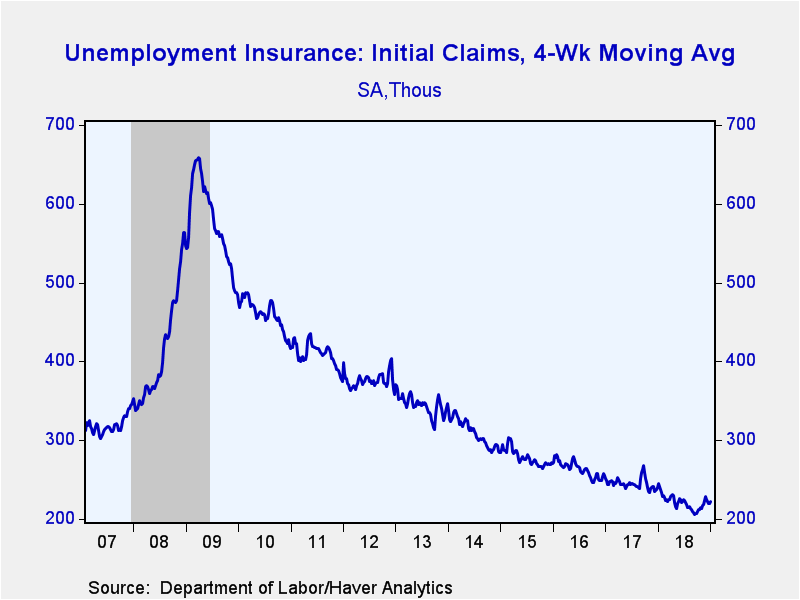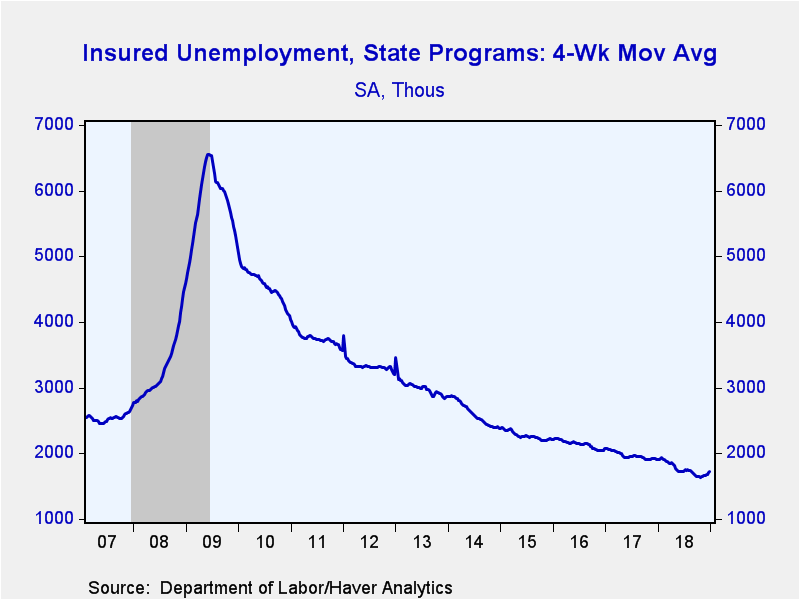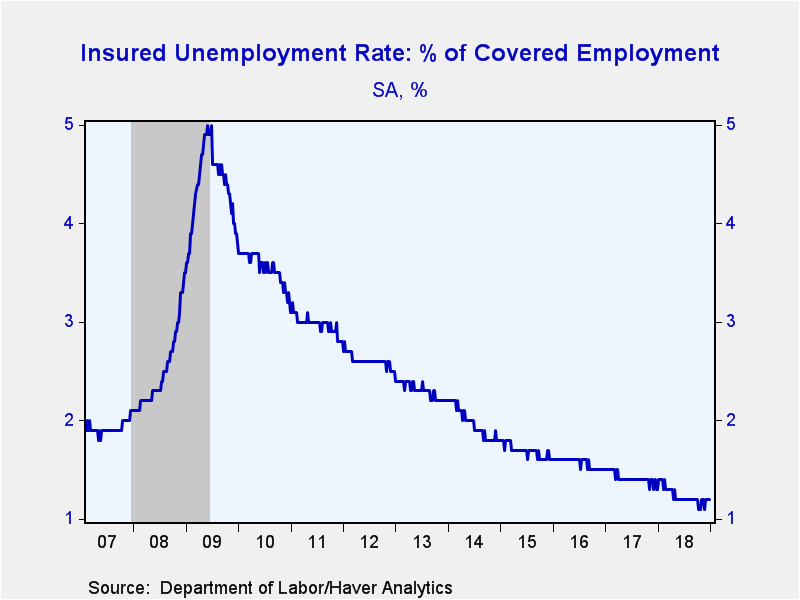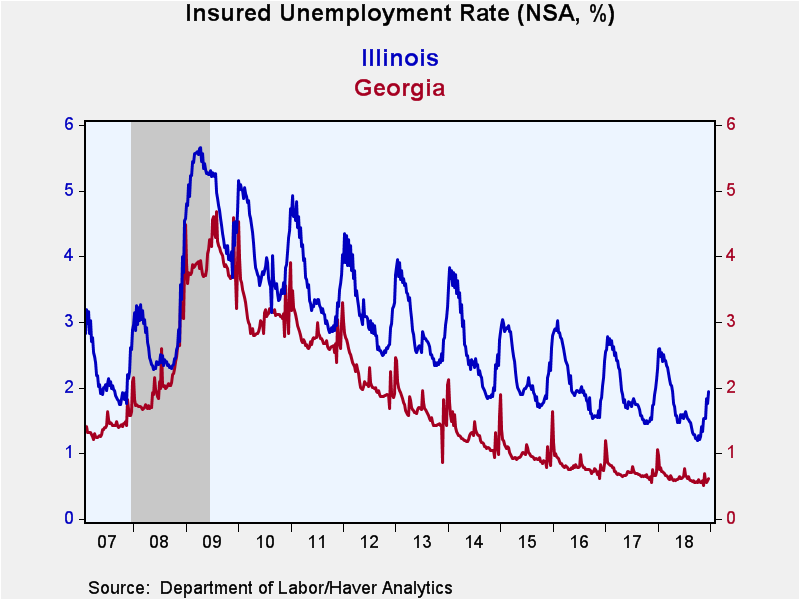 Global| Jan 10 2019
Global| Jan 10 2019U.S. Initial Claims for Unemployment Insurance Reverse Prior Gains
by:Tom Moeller
|in:Economy in Brief
Summary
Initial unemployment insurance claims declined to 216,000 (-13.6% y/y) during the week ended January 5 from 233,000 in the prior week, revised from 231,000. It was the lowest level of initial claims in four weeks. The Action Economics [...]
Initial unemployment insurance claims declined to 216,000 (-13.6% y/y) during the week ended January 5 from 233,000 in the prior week, revised from 231,000. It was the lowest level of initial claims in four weeks. The Action Economics Forecast Survey expected 225,000 new filings. The four-week moving average declined to 221,750 from 219,250. During the last ten years, there has been a 73% correlation between the level of initial claims and the m/m change in nonfarm payrolls.
Continuing claims for unemployment insurance declined to 1.722 million (-9.6% y/y) in the week ended December 29 from 1.750 million the previous week. The four-week moving average of continuing claims rose to 1.721 million from 1.706 million. It was the highest reading since mid-August of last year.
The insured unemployment rate held steady at 1.2% in the week ended December 29, just above its record low of 1.1% reached in November. The figure compares the number of people receiving benefits to the number covered by unemployment insurance.
Insured unemployment rates vary widely by state. During the week ending December 22, the lowest rates were in North Carolina (0.45%), Florida (0.46%), Virginia (0.56%) and Tennessee (0.58%). Higher rates were in California (1.84%), Pennsylvania (1.94%), Connecticut (2.20%), New Jersey (2.20%) and Alaska (3.25%). The state data are not seasonally adjusted.
Data on weekly unemployment claims going back to 1967 are contained in Haver's WEEKLY database and are summarized monthly in USECON. Data for individual states are in REGIONW. The expectations figure is from the Action Economics Forecast Survey, carried in the AS1REPNA database.
How Much Do We Spend on Imports? from the Federal Reserve Bank of San Francisco is available here.
| Unemployment Insurance (SA, 000s) | 01/05/19 | 12/29/18 | 12/22/18 | Y/Y % | 2018 | 2017 | 2016 |
|---|---|---|---|---|---|---|---|
| Initial Claims | 216 | 233 | 221 | -13.6 | 221 | 243 | 264 |
| Continuing Claims | -- | 1,722 | 1,750 | -9.6 | 1,763 | 1,964 | 2,143 |
| Insured Unemployment Rate (%) | -- | 1.2 | 1.2 |
1.3 |
1.2 | 1.4 | 1.6 |
Tom Moeller
AuthorMore in Author Profile »Prior to joining Haver Analytics in 2000, Mr. Moeller worked as the Economist at Chancellor Capital Management from 1985 to 1999. There, he developed comprehensive economic forecasts and interpreted economic data for equity and fixed income portfolio managers. Also at Chancellor, Mr. Moeller worked as an equity analyst and was responsible for researching and rating companies in the economically sensitive automobile and housing industries for investment in Chancellor’s equity portfolio. Prior to joining Chancellor, Mr. Moeller was an Economist at Citibank from 1979 to 1984. He also analyzed pricing behavior in the metals industry for the Council on Wage and Price Stability in Washington, D.C. In 1999, Mr. Moeller received the award for most accurate forecast from the Forecasters' Club of New York. From 1990 to 1992 he was President of the New York Association for Business Economists. Mr. Moeller earned an M.B.A. in Finance from Fordham University, where he graduated in 1987. He holds a Bachelor of Arts in Economics from George Washington University.










